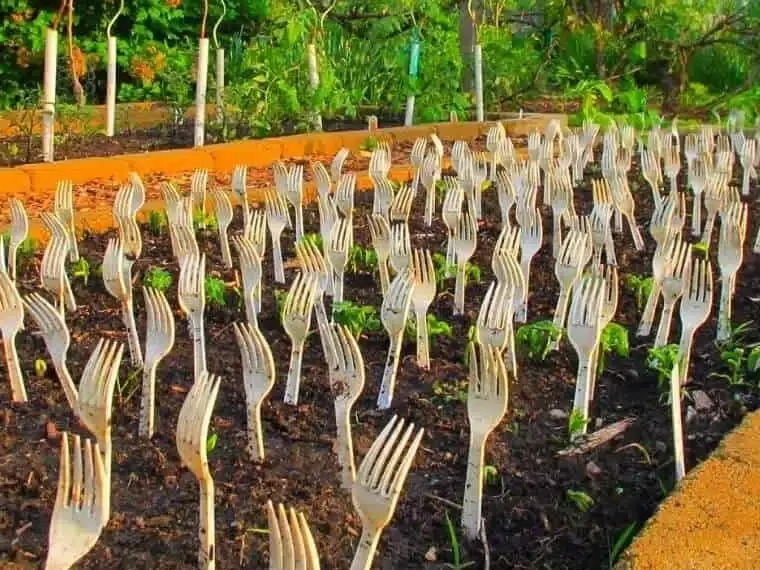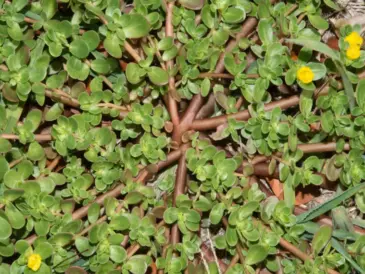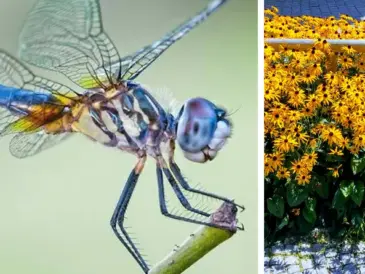Gardening is more than just planting seeds and pulling weeds – it’s a therapeutic, deeply rewarding way to connect with nature.
Tending to plants, feeling the soil between your fingers, and watching something flourish under your care can reduce stress, boost your mood, and even improve your overall health.
Research shows that spending time in the garden can lower cortisol (the stress hormone), increase vitamin D levels, and give you a sense of accomplishment.
Whether you’re growing vegetables for the table, herbs for the kitchen, or flowers for beauty, a garden adds personality, charm, and life to your home.
But let’s be honest – not everyone is born with a green thumb. If you’ve ever felt overwhelmed at the thought of starting a garden or watched plants wither despite your best efforts, you’re not alone.
The truth is, successful gardening comes down to using smart, simple techniques that make plant care easier.
1. Use a Muffin Tin as a Seed Spacing Guide
One of the most common beginner mistakes is improper seed spacing – planting too close together causes overcrowding, while planting too far apart wastes valuable space.
A muffin tin from your kitchen is the perfect solution.
How it works:
- Press the bottom of the muffin tin into prepared soil to make evenly spaced indentations.
- Drop seeds into each hole at the recommended depth (check the seed packet).
- Cover lightly with soil and water gently.
Why it works: Even spacing ensures every plant gets enough sunlight, air circulation, and nutrients, leading to healthier growth and bigger harvests.
Pro tip: This hack is especially helpful for square-foot gardening or raised beds, where efficient use of space is critical.
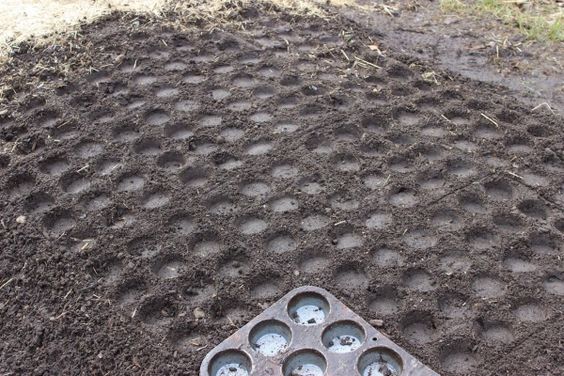
2. Create a Garden Path with Upside-Down Glass Bottles
If pets, kids, or guests tend to wander into your garden beds, an eco-friendly bottle border can save your plants.
How to do it:
- Collect wine or soda bottles in various colors.
- Rinse them well and remove any labels.
- Push the bottles neck-down into the soil along the edge of your garden bed, leaving about 2/3 of the bottle buried for stability.
Benefits:
- Creates a visible border to guide foot traffic away from delicate plants.
- Adds an artistic, colorful touch to your garden design.
- Reduces waste by reusing bottles instead of buying new edging.
Extra idea: Arrange bottles in color patterns or gradients for a striking visual effect.

3. Make Custom Garden Markers with Old Spoons
Knowing exactly what’s planted where is essential, especially in the early stages when seedlings all look similar.
How to do it:
- Flatten old metal spoons with a hammer.
- Paint or stamp the flattened surface with plant names, illustrations, or symbols.
- Coat with clear varnish to make them weatherproof.
- Push them into the soil at the head of each row or pot.
Why it’s great: Metal spoons won’t rot or fade as quickly as wooden sticks, and they give your garden a rustic, personal touch.
Alternative: Use plastic takeout spoons – just paint, label, and seal them.


4. Keep Plants Hydrated with Wine Bottles
If you forget to water plants or go away often, a DIY slow-release watering system can save them.
How it works:
- Fill a clean wine or glass bottle with water.
- Quickly invert it into the soil near the plant’s base (you can use a small stake to keep it steady).
- Water will slowly seep out as the soil dries, providing consistent moisture.
Benefits:
- Prevents underwatering and overwatering.
- Reduces evaporation in hot weather.
- Perfect for seedlings and container plants.
Tip: For potted plants, use smaller bottles like glass soda bottles to avoid over-saturating the soil.
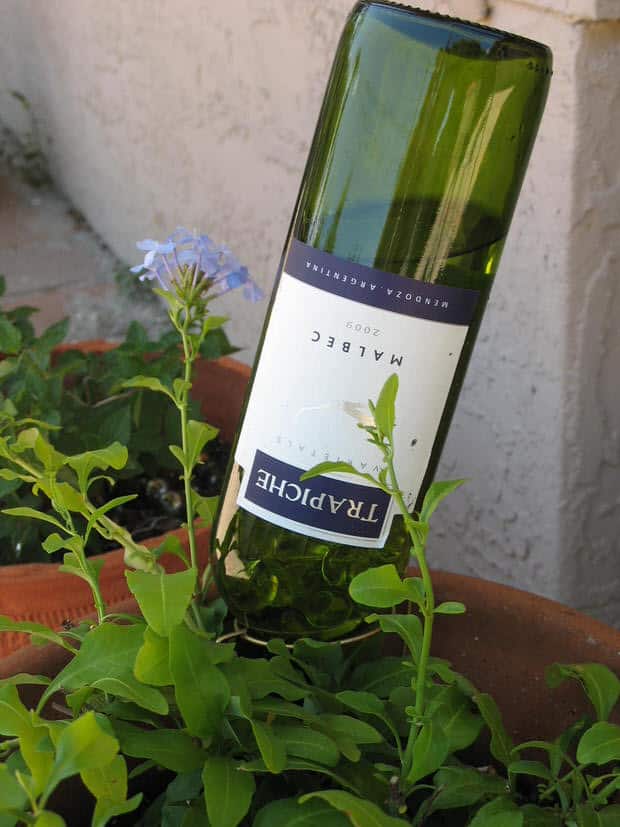
5. Repel Garden Pests with Plastic Forks
Stray cats, squirrels, rabbits, and even raccoons can cause havoc in garden beds.
Solution: Stick plastic forks prongs-up around your plants.
Why it works: The forks create an uneven, uncomfortable surface that discourages digging without harming animals.
Extra benefit: This is a chemical-free pest deterrent – safe for organic gardens.
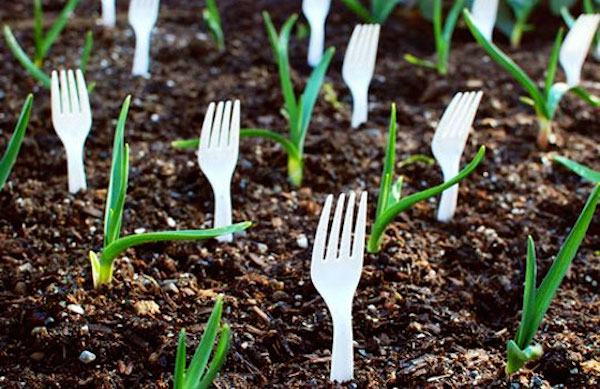
6. Turn a Colander into a Hanging Planter and Wind Chime
Repurposing kitchen items not only saves money but adds charm to your garden.
How to do it:
- Line an old colander with coconut coir or burlap.
- Fill with potting soil and plant flowers, strawberries, or herbs.
- Attach string or chain to the handles for hanging.
- For a wind chime effect, hang lightweight utensils or metal trinkets from the drainage holes.
Why it’s great: The colander’s built-in holes provide excellent drainage, and the wind chime adds sound and movement to your space.

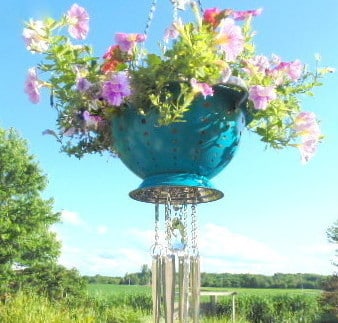
7. Grow Plants in Glass Bottles for Small Spaces
Perfect for apartment dwellers or anyone short on space.
How to do it:
- Cut an opening in the side of a glass bottle using a glass cutter.
- Add drainage material like pebbles, then potting mix.
- Plant herbs such as basil, parsley, or thyme.
- Place on a sunny windowsill or hang with macramé.
Benefits:
- Compact, decorative, and functional.
- Great for indoor gardening year-round.
Tip: Use self-watering setups inside bottles to reduce daily watering needs.

8. Recycle Tin Cans into Stylish Planters
A budget-friendly way to create matching containers for your plants.
How to do it:
- Wash cans thoroughly and remove sharp edges.
- Drill drainage holes at the bottom.
- Paint or decorate with twine, stencils, or decoupage.
- Fill with potting mix and plant flowers or herbs.
Why it works: Tin cans are lightweight, easy to move, and ideal for small plants. They can be placed in window boxes, hung from fences, or arranged on shelves for a vertical garden effect.
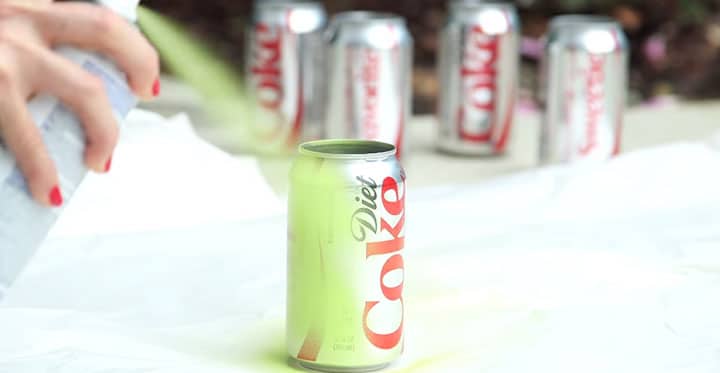
You don’t need a perfect backyard or years of gardening experience to grow something beautiful.
These 8 clever gardening hacks prove that with a little creativity, recycled materials, and a few smart tricks, anyone can have a thriving garden – whether it’s on a balcony, patio, or full yard.
The best part? Many of these ideas cost next to nothing and can be made from things you already have at home.
